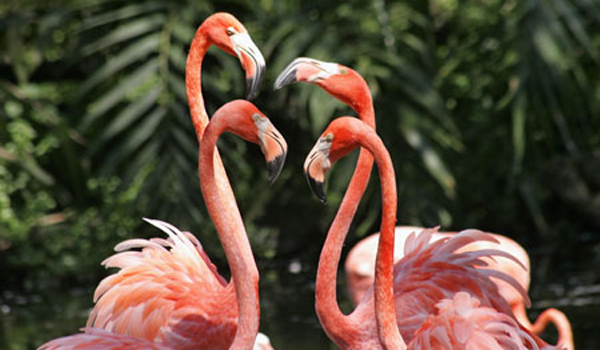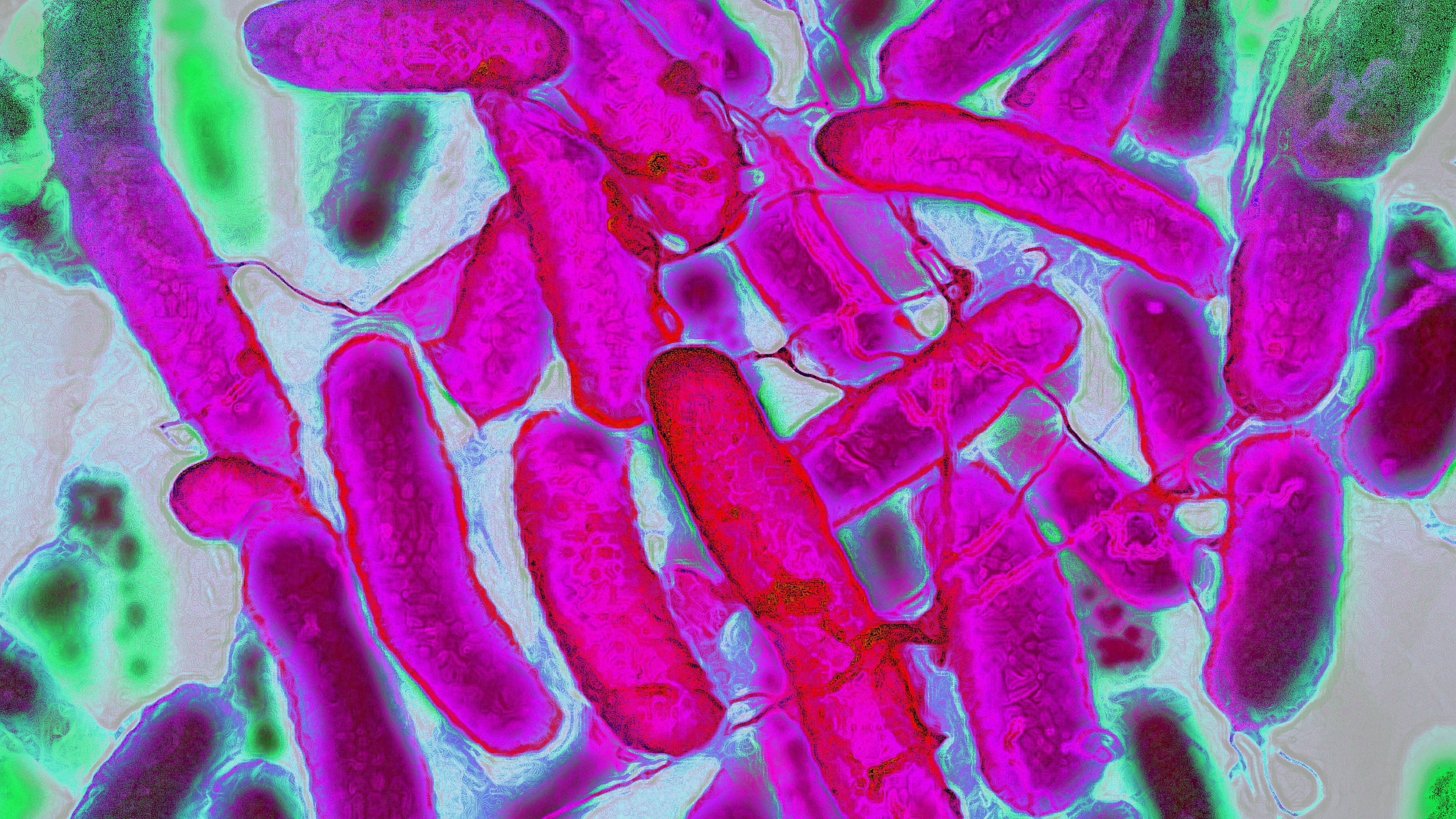Why Are Flamingos Pink?

When flamingos hatch, their feathers are actually a drab light gray. So why are flamingos pink as adults?
Flamingos live by lakes, swamps and wetlands, and so they eat mostly algae, insect larvae and small crustaceans, such as shrimp and mollusks.
The red and blue-green algae they consume is loaded with beta carotene, an organic chemical that contains a reddish-orange pigment. (Beta carotene is also present in many plants, but especially in tomatoes, spinach, pumpkins, sweet potato and, of course, carrots.) The mollusks and crustaceans flamingos snack on contain similar pigment-packing carotenoids.
The bird's digestive system extracts pigment from carotenoid-containing food and it eventually dissolves in fats. The fats are then deposited in new feathers as they grow, and the flamingo's color slowly shifts to pink.
Flamingos' colors can range from pale pink to crimson, depending on the amount of pigment present in the bird 's diet. Carotenoid levels in algae and crustaceans vary in different parts of the world, which is why Caribbean flamingos are usually bright red and orange, while flamingos of the drought-plagued Lake Nakuru in central Kenya tend to be a paler pink.
If a flamingo were to suddenly stop eating food containing carotenoids, its new feathers would begin grow in with a much more pale shade, with its reddish feathers eventually molting away.
So the next time you spot a pink flamingo, let it serve as a reminder that, sometimes, you really are what you eat.
Get the world’s most fascinating discoveries delivered straight to your inbox.
- Why Do Roosters Have Wattles?
- Why Do Bird Flocks Move in Unison?
- Case Closed: Radar Reveals Cause of Blackbird Deaths
Got a question? Send us an email and we'll look for an expert who can crack it.
Follow Remy Melina on Twitter @RemyMelina

